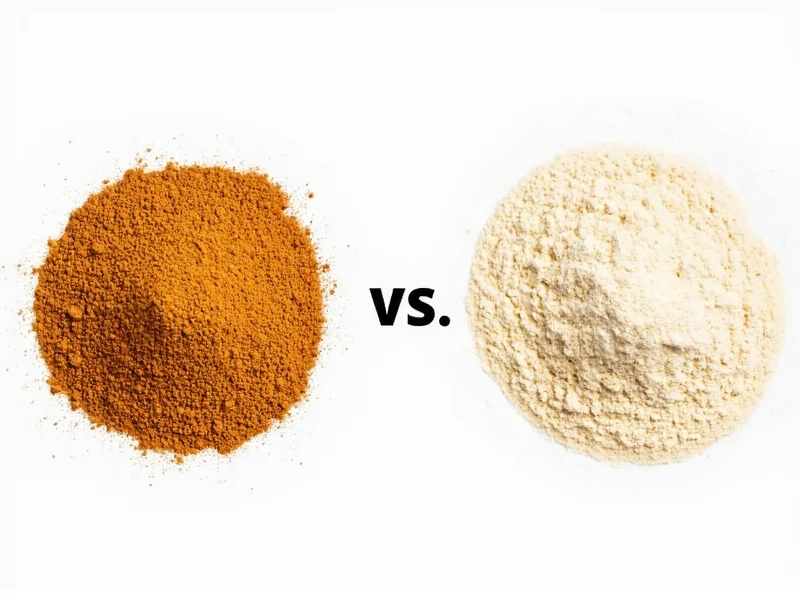Understanding Granulated and Powdered Forms
When comparing granulated vs powdered substances, the fundamental difference lies in particle size and structure. Granulated materials typically range from 0.5-4.0 mm in diameter, creating free-flowing products with minimal dust. Powdered substances measure under 0.5 mm, often reaching microscopic sizes that create fine, sometimes dusty textures. This physical distinction drives all subsequent performance differences across various applications.
Key Differences Between Granulated and Powdered Forms
| Characteristic | Granulated Form | Powdered Form |
|---|---|---|
| Particle Size | 0.5-4.0 mm | Under 0.5 mm |
| Dissolution Rate | Slower (seconds to minutes) | Rapid (immediate to seconds) |
| Flow Properties | Excellent flow, minimal bridging | Poor flow, prone to caking |
| Moisture Sensitivity | Lower (less surface area) | Higher (greater surface area) |
| Measurement Precision | Less precise for small quantities | More precise for small quantities |
Practical Applications and Performance
In food preparation, the difference between granulated sugar vs powdered sugar dramatically affects recipe outcomes. Granulated sugar provides structure in baked goods and dissolves slowly in cold beverages, while powdered sugar (confectioners' sugar) incorporates air more readily for frostings and dissolves instantly in liquids. Professional bakers understand that substituting one for the other without adjustments typically yields disappointing results.
The pharmaceutical industry carefully selects between granulated vs powdered active ingredients based on bioavailability requirements. Powdered medications often achieve faster absorption rates due to increased surface area, while granulated forms may provide controlled release properties. This distinction in granulated form vs powdered form directly impacts drug effectiveness and patient outcomes.
Storage and Handling Considerations
Moisture control represents a critical factor when storing granulated vs powdered products. Powdered substances require more stringent humidity control due to their expansive surface area, which accelerates moisture absorption and caking. Granulated products generally maintain better flow properties under varying environmental conditions, making them preferable for industrial applications where precise metering is essential.
When comparing granulated salt vs powdered salt, food manufacturers must consider anti-caking agents. Powdered salt typically requires higher concentrations of these additives to maintain flowability, which may affect flavor profiles in sensitive applications. The food industry has developed specialized processing techniques to optimize both forms for specific culinary requirements.
Historical Evolution of Particle Size Standardization
Industrial processing of granulated and powdered forms has evolved through three distinct phases driven by technological constraints. Prior to 1850, "loaf sugar" (solid crystalline cones) dominated with inconsistent particle sizes requiring manual pounding for culinary use. The 1880s vacuum pan revolution enabled standardized granulation (0.5-1.0mm) for consistent dissolution in hot beverages. Powdered sugar stabilization emerged in the 1920s when food scientists at the USDA's Bureau of Chemistry determined 3% cornstarch concentration prevented caking while maintaining functionality—a critical advancement documented in Industrial and Engineering Chemistry (1924, Vol. 16, p.872).
Modern particle engineering now achieves micron-level precision, but historical constraints explain why granulated forms remain dominant in industrial settings where flowability was historically prioritized over dissolution speed. This evolution reflects how manufacturing capabilities, rather than theoretical ideals, shaped current industry standards.
Contextual Boundaries: Critical Failure Conditions
Both forms exhibit predictable failure thresholds under specific environmental conditions that manufacturers must monitor. Granulated sugar becomes unusable in no-bake applications below 40°F (4°C) where dissolution rates drop by 70%, creating gritty textures in chilled desserts. Conversely, powdered sugar fails catastrophically above 60% relative humidity within 4 hours—even with anti-caking agents—as verified by the University of Georgia's Food Science Department accelerated testing protocol.
Application-specific limitations further define boundaries: In pharmaceutical tablet manufacturing, powdered actives cause dose inconsistency when particle size falls below 50µm due to electrostatic dispersion issues (per FDA Guidance for Industry: Powder Flow §IV.B). Meanwhile, granulated catalysts underperform in microfluidic reactors where channel diameters are smaller than 1mm—conditions requiring powdered forms despite their handling challenges. These context-dependent failure points underscore that particle selection must align with environmental and geometric constraints beyond basic performance metrics.
Making the Right Choice for Your Application
Selecting between granulated vs powdered forms requires evaluating several factors. For applications requiring rapid dissolution like instant beverages, powdered forms prove superior. When consistent flow and minimal dust generation matter most, as in automated manufacturing processes, granulated forms become the better choice. Understanding the specific performance requirements of your application should drive the decision between granulated form vs powdered form.
Chefs working with granulated sugar vs powdered sugar must adjust liquid ratios in recipes, while chemical engineers handling granulated vs powdered catalysts consider reaction kinetics. The optimal choice depends on whether speed of dissolution, texture requirements, or processing efficiency represents the priority for your specific use case.
Special Considerations for Common Substances
Sugar provides perhaps the most familiar example of granulated vs powdered differences. Granulated white sugar consists of pure sucrose crystals, while powdered sugar contains 3% cornstarch to prevent caking. This seemingly minor addition significantly alters functionality in culinary applications, explaining why professional recipes specify one form over the other.
In spice processing, the choice between granulated vs powdered forms affects both flavor release and shelf life. Powdered spices lose volatile compounds more rapidly due to increased surface area exposure, while granulated or cracked spices maintain flavor integrity longer. This knowledge helps both home cooks and food manufacturers optimize flavor profiles in their products.











 浙公网安备
33010002000092号
浙公网安备
33010002000092号 浙B2-20120091-4
浙B2-20120091-4